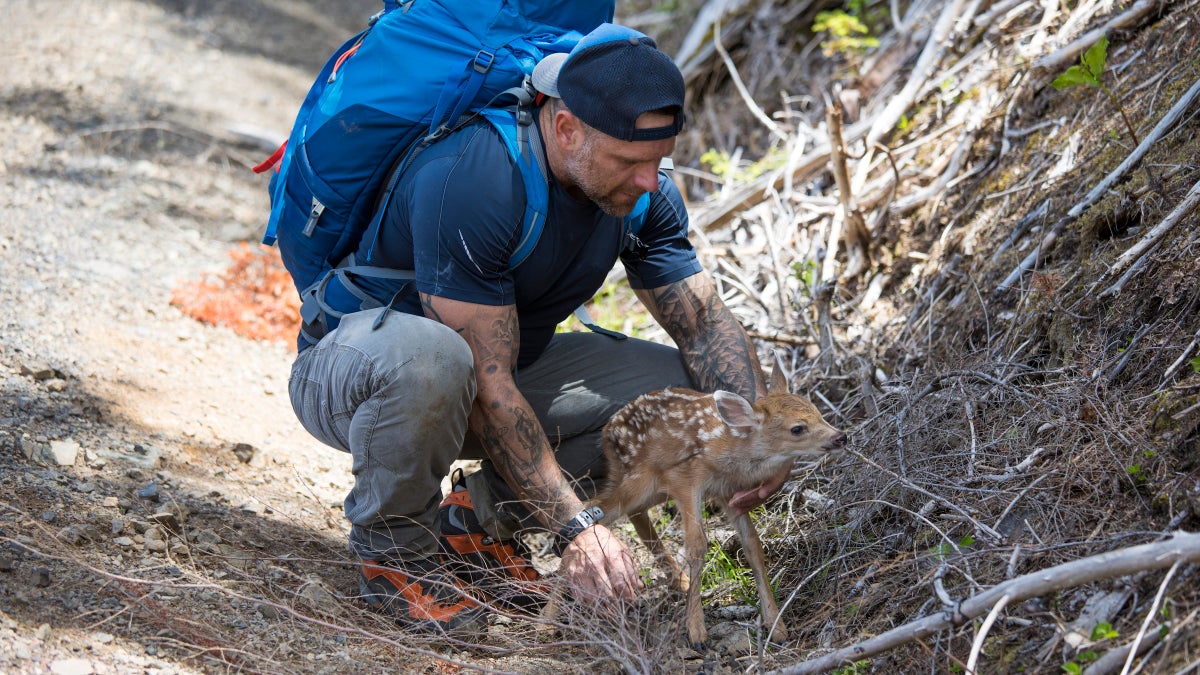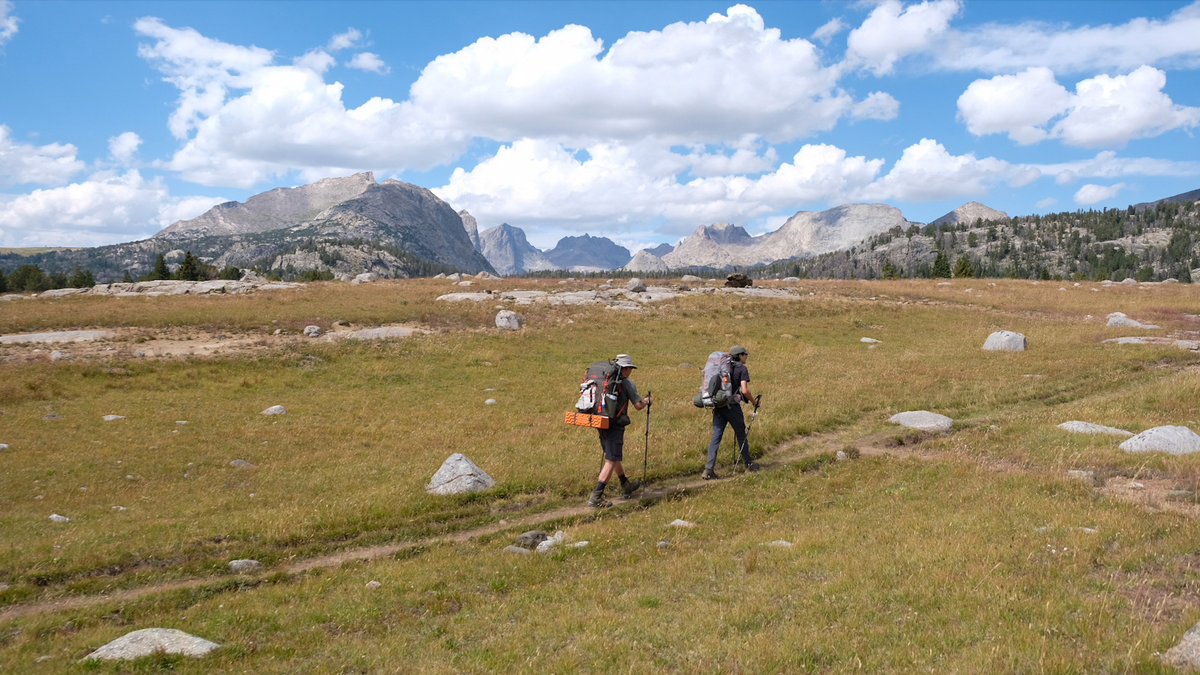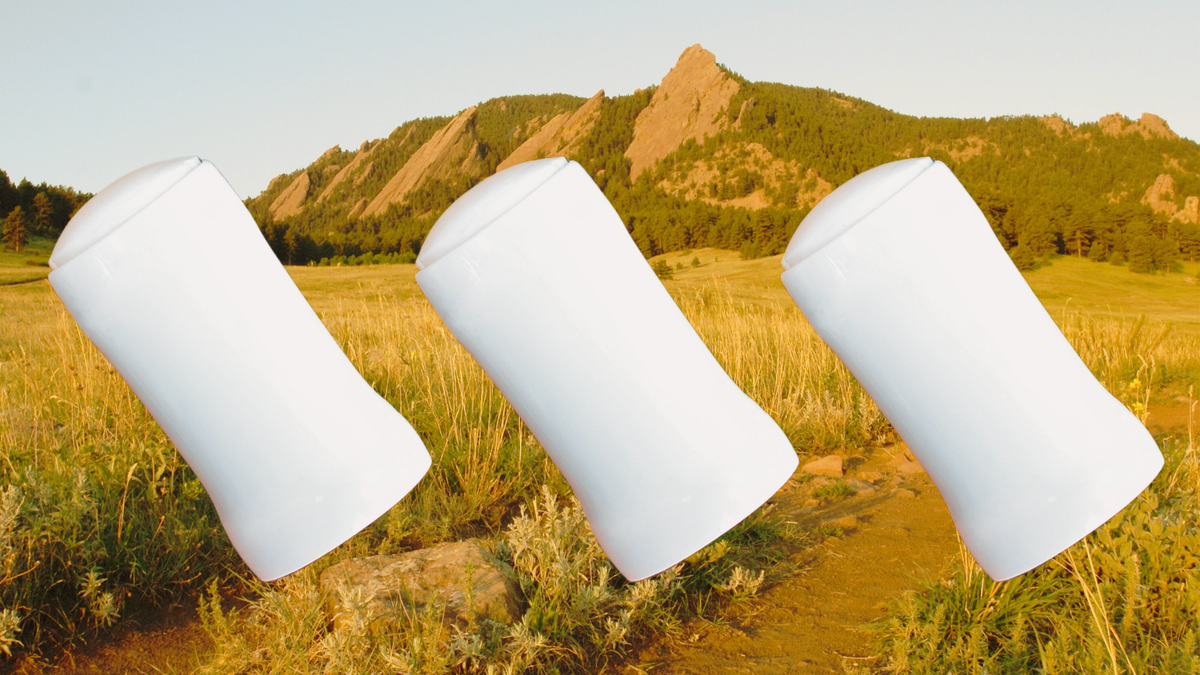
This winter a woman in Steamboat Springs spotted an elk on her property. When she went out to take a picture, the animal startled and ran into a gully where it got stuck in snow up to its neck. Convinced the elk needed rescue, she called game wardens, who told her to leave the animal alone. By morning, she’d gathered friends to dig it out, but it died before they could help.
The story illustrates a longstanding ethical dilemma. Many people, guided by truly good intentions, can’t stand to see an animal die, especially if their own actions—like approaching the elk to take a picture—are what led to its predicament. Even land managers will occasionally try to rehabilitate an animal that’s been hit by a car. However, this way of thinking is a slippery slope. A reasonable person could make the case that most frontcountry animal injuries are in some way caused by humans—whether that’s due to our encroachment on habitat, or climate change applying new and deadly pressure. But regardless of the cause of injury, wildlife professionals—including rangers and wardens—are pretty firm about letting nature take its course, even if that means the animal dies. After all, when one beast falls, another is fed.
It’s tempting to set such a black-and-white rule. It’s even more tempting to Monday-morning quarterback. Take one infamous case in which a do-gooder came across a lone shivering baby bison in Yellowstone. He loaded it into the back of his SUV and brought it to the rangers. As it turned out, the baby wasn’t actually abandoned. But now that it had taken a joyride in a Toyota Sequoia, its mother wouldn’t take it back, and given the near certainty of its violent death in the jaws of a predator, rangers instead chose to euthanize it. The good Samaritan was fined $119 for his efforts, and his empathy got the bison killed. Critics decried the driver. They also called the case clear-cut, even though it may not have been to the do-gooder at the time.
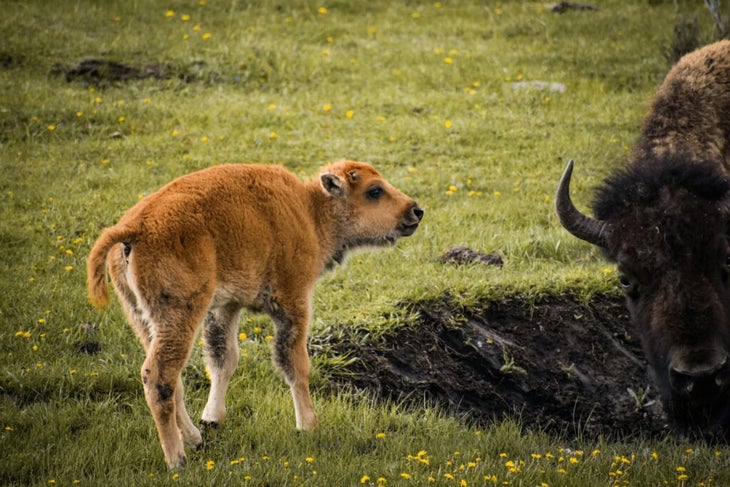
Other cases are much murkier. My wife worked for years as a field biologist. On one gig, her team was installing small sections of fence around young aspen trees in the backcountry of a national park to cage them off and test how much elk were browsing. But one day a rutting elk scooped up the metal fencing with its antlers where it got entangled. When the cage then flopped onto the elk’s back, it started, and sprinted out, thinking it was being attacked by some beast it could not see.
What to do? Obviously this was a case where human activity had put the elk in danger. It had no hope of removing the cage from its antlers. The researchers dropped their work and ran after the elk, also radioing game wardens to explain the situation. By the time the wardens arrived with their tranquilizer darts, the elk had wisely waded into the middle of the river—this is how the animals escape predators. To tranquilize the elk in the river would cause it to drown. So everyone sat down and waited an hour or so. Finally when the elk emerged, they tranquilized it, and were able to remove the metal cage and let the elk go on its merry way. A successful outcome. And yet one might wonder how many federal dollars were spent on this single mission, and astutely note that this kind of treatment must be the exception, not the rule.
So here’s another case from my wife’s annals of animal rescue. She and her partner were live-trapping mice for another experiment. But somehow two ground squirrels found their way into the traps. In the cold Montana summer night, they’d gone into torpor, a sort of short-term hibernation from hypothermia and dehydration. Left to the elements, the squirrels would probably have died. So these young wildlife-lovers took action: They unzipped parkas and each placed a squirrel against their belly to warm them up. It seemed sensible enough. But as they hiked on to the next trap her friend began to wonder aloud. “I think there’s something dangerous about squirrels, but I can’t quite recall what it is.” He snapped his fingers. “Now I remember: They carry bubonic plague!”
The thought of a sharp-fanged and sharp-clawed rodent coming back to life in immediate proximity to their internal organs made the two rethink their plan. So they returned to their truck, and lay the two squirrels on the driver’s seat where the early morning sunlight through the windshield heated the torpored furballs. They shut the door and went back to work. Returning a few hours later, the creatures were. . . gone? Later when they returned the truck to the yard, the mechanics discovered the squirrels had somehow found their way out of the cab and into the undercarriage. While the mechanic was able to dislodge the animals, it’s safe to say that this intervention may not have served the squirrels well.
I think it’s worth discussing how these rescue attempts affect humans, too. Compared with a century or two ago, humans now have virtually no contact with non-domesticated animals. (We have very little contact with farm animals, either.) And I think if we believe that other species have a right to exist, then it might be useful—even profound—to once in a while brush up against them. I don’t accept the view that “the environment” is entirely separate from civilization, or that humans should never disturb or visit it. I tend to think humans can—and should—have some sort of connection to other species besides donating money to some group that will protect them. Practicing kindness to another species is important. And while I get that it’s possible that our kindness may actually harm that species, it’s important to try (within reason), nonetheless. It reminds us that we, too, are part of creation.
Here’s an analogy. In the modern welfare state, citizens basically agree to pay taxes in order to distribute their wealth to those who need it. This approach has dramatically reduced poverty in many European nations. But it also relieves many individuals from the ancient act of charity—of offering an actual hand to the poor, tired, and downtrodden. So while this technocratic approach produces better results (look at the higher rates of poverty in the United States compared to Europe) something immeasurable is lost when so many people no longer feel the need to give personally to those in need. When such contributions are just deducted from your paycheck, we become disconnected from the act of charity. We lose the opportunity to give back in the way that that is taught by most world religions, as well as the sort of social-class intermingling that might, in theory, make for better democracies.
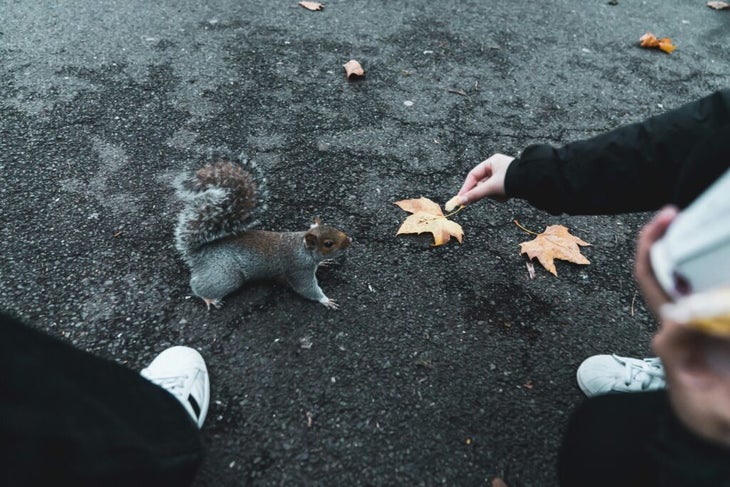
To bring the analogy back to animals: wildlife professionals have determined that regular humans should leave nature alone. Let the rangers and wardens figure it out, they say. And yet, some basic part of our humanity is lost if, coming upon a bird with a broken wing, we just walk past, thinking, I must not meddle with the environment. But always deferring to the government professionals can place us in an ethically dubious position. We may end up feeling powerless, unable to perform an instinctual act of kindness. At some level, training ourselves to turn a blind eye to pain has to be bad for the soul.
As for the woman who watched the elk die in the snowdrift near her house: I understand why the warden advised her to leave the animal alone. Elk can be dangerous if they feel they are in danger, striking with their huge hooves and potentially endangering their human rescuers. In any case, the agencies decided to let the elk die, and it did. My point isn’t to say the agencies made the wrong decision, just that their decision doesn’t appear to be ethically superior to that of the woman who eventually (and unsuccessfully) attempted to save it.
I also feel that her instinct to try to gather her neighbors to dig out the elk would likely have forged a connection to the nonhuman world that is rare and precious. Remember that humans lived for millennia in intimacy with wild animals, both as hunters and as prey. Maybe we are safer if we stay away from injured animals. But surely something has been lost by rupturing that connection.
Finally, most people who’ve been watching the state of the planet for the past decades are feeling a strong sense of guilt. Humans are causing the extinction of hundreds of other species. It may be easy to ridicule the man who packed a baby bison into his car. It may not have been an educated decision, or even necessarily the right one. But let’s not belittle his motives.
Mark Sundeen teaches environmental writing at the University of Montana. Got an ethical question of quandary of your own? Send it to sundogsalmanac@hotmail.com.
The post When Is It OK to Rescue a Wild Animal? appeared first on Outside Online.











